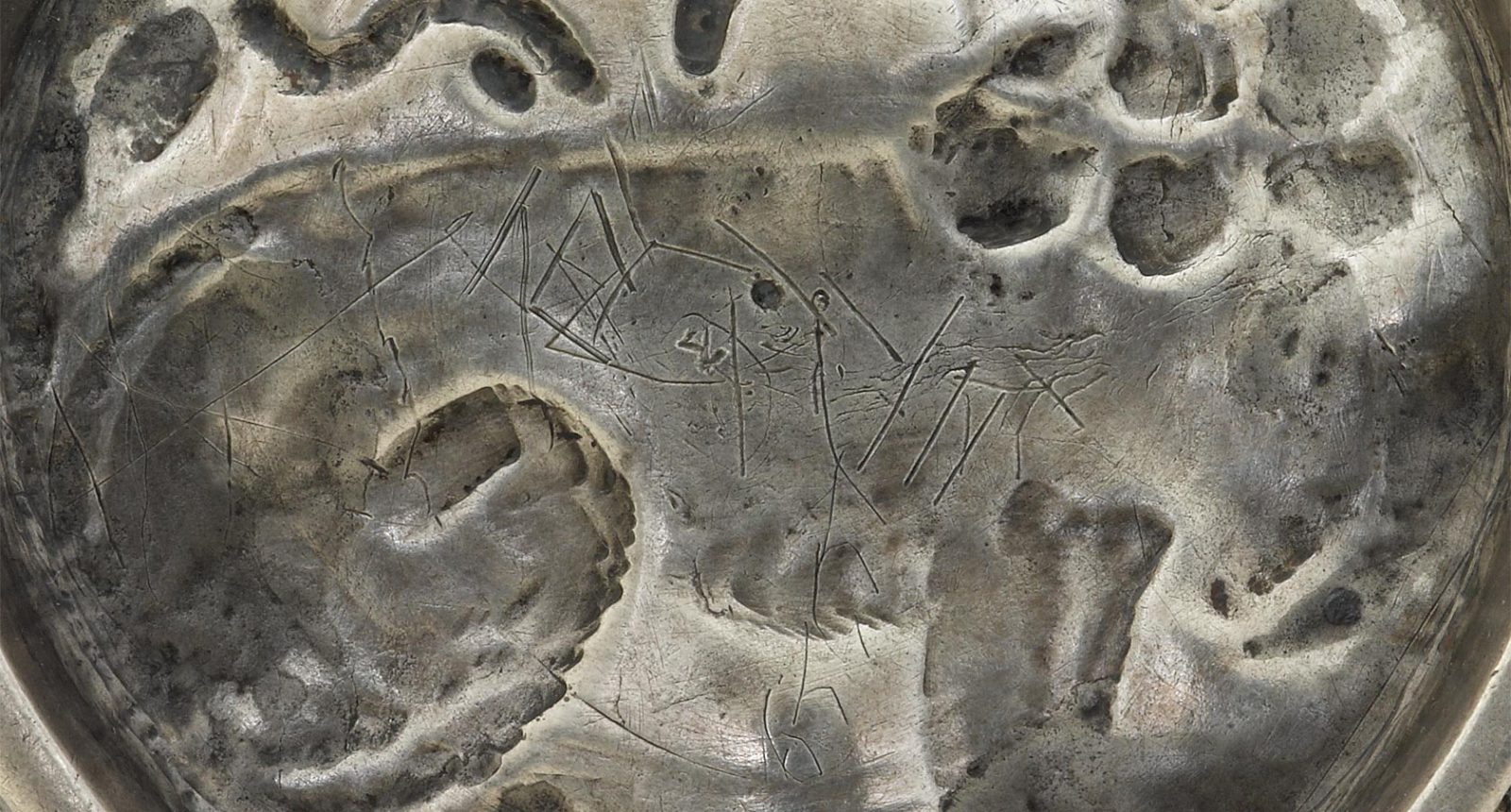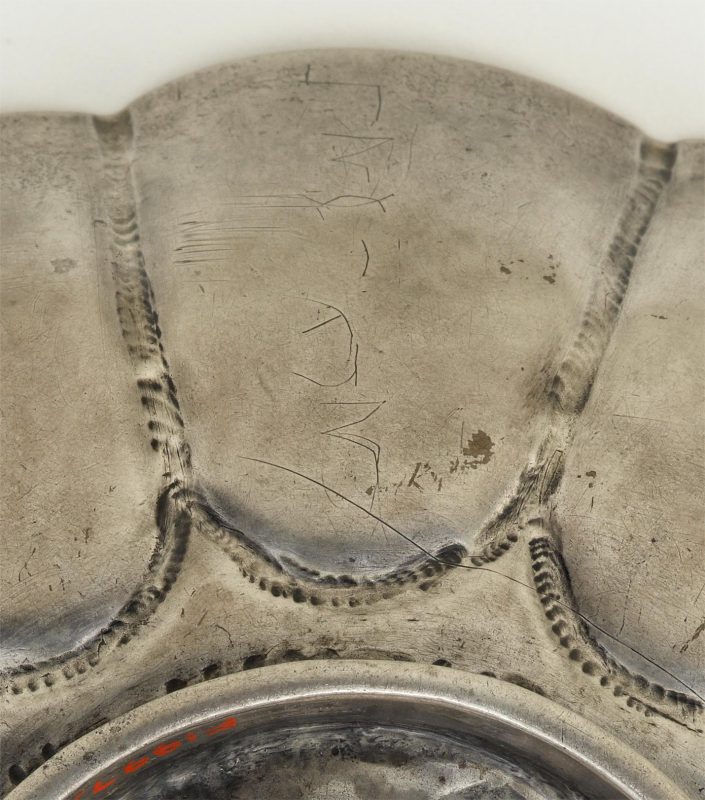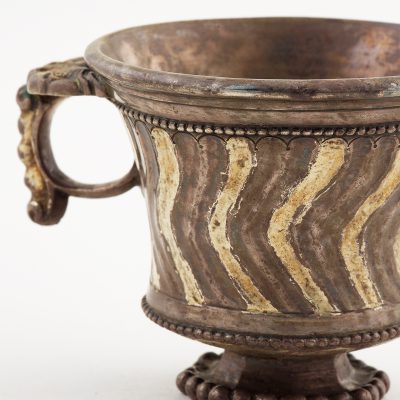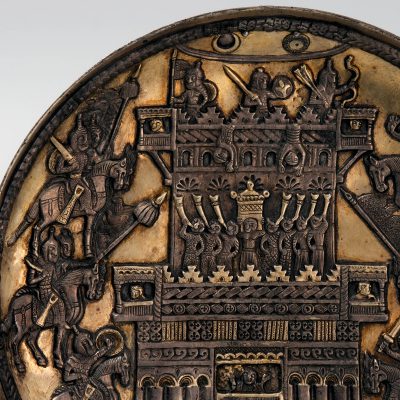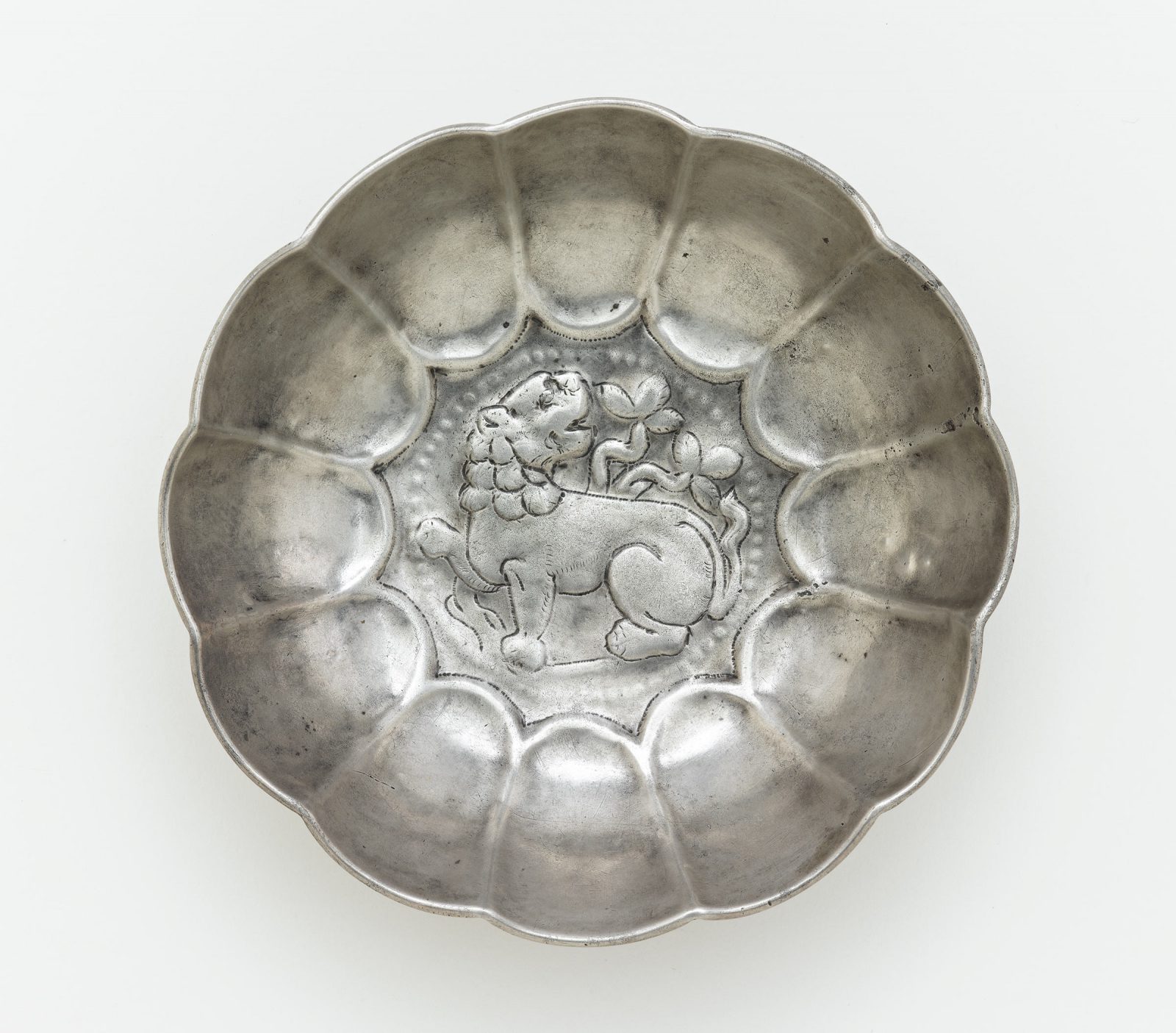
Lobed Bowl with Lion
Lobed Bowl with Lion and Foliage, Enclosed in a Medallion
Sogdian; Central Asia, probably Uzbekistan, mid-6th to mid-7th century CE
Silver with repoussé and chased decoration; H. 4.8 × Diam. 15.3 cm
Freer Gallery of Art, F1997.13.
Photograph Freer|Sackler.
This hammered, silver-lobed bowl displaying a lion within a medallion exemplifies the skillful craftsmanship of Sogdian metalworkers. The decorative elements were executed in repoussé and chasing. The dynamic figure of the lion, turning his head back toward a leafy bush or stylized flowers, is a familiar motif in a particular group of metalworkSogdian Metalworking Learn more about Sogdian metalwork. The lion motif is found both in Western and Eastern artistic production, and has a long tradition of being associated with power. In Sogdian art, the goddess Nana is often shown mounted on a lion. A similarly shaped lobed bowl appears in banquet scenes painted in a room of Temple I at Panjikent and in the reception hall of a house, illustrating the bowl’s most likely use as a drinking vessel.
In addition to its decoration, technique, and representation elsewhere in Sogdian art, two Sogdian inscriptions—lightly scratched on the bottom of the vessel and vertically on its outer wall—attest to its origin. The Russian scholar Boris I. Marshak identified the first inscription as p’y’n, possibly a Sogdian personal name; Fig. 1. However, his colleague, the epigraphist Vladimir A. Livshits, read it as p’y’k, meaning “watcher/watchful.” The second inscription, according to Marshak, could be read as cyzh r’y-cyz r’yh, “marsh land,” possibly the nickname of the owner; Fig. 2. Livshits, however, saw the third letter of cyzh as an n and so read it as cynh, “silk.”
The bowl reportedly came to light in Luoyang 洛阳 , in China’s Henan province, but its Sogdian inscriptions confirm it as a work of Sogdian craftsmanship. They also provide evidence of the circulation of Sogdian luxury goods in China and of their influence on Chinese metalworking.
by Antonietta Catanzariti
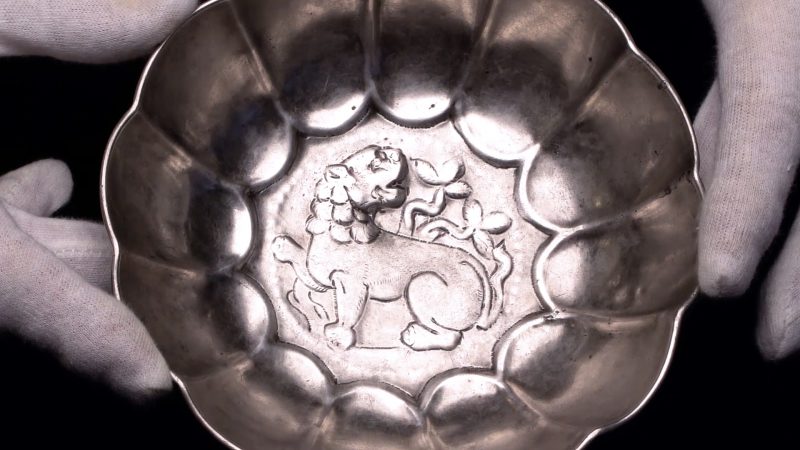
Fig. 3 Keith Wilson (Freer Gallery of Art and the Arthur M. Sackler Gallery) discusses the Lobed Bowl with Lion.
B[oris] I. Marshak [Marschak/Maršak], Sogdiiskoe serebro: Ocherki po vostochnoi torevtike Согдийское серебро: Очерки по восточной торевтике [Sogdian silver: Essays on Eastern Toreutics] (Moscow: “Nauka” [“Science” publishing house], 1971), Fig. 31; Boris Marshak [Marschak/Maršak], Silberschätze des Orients: Metallkunst des 3.–13. Jahrhundert und Ihre Kontinuität (Leipzig: Seemann, 1986), no. 69; and Boris I. Marshak [Marschak/Maršak], “A Sogdian Silver Bowl in the Freer Gallery of Art,” Ars Orientalis 29 (1999): 101–10.
Guitty Azarpay, Sogdian Painting: The Pictorial Epic in Oriental Art (Berkeley, Los Angeles, and London: University of California Press, 1981), 111, fig. 48: Panjikent I:10; and 121, fig. 53: Panjikent VI:1.
Boris I. Marshak [Marschak/Maršak], “A Sogdian Silver Bowl in the Freer Gallery of Art,” Ars Orientalis 29 (1999): 107–8.
Bo Gyllensvärd, “T’ang Gold and Silver,” Bulletin of the Museum of Far Eastern Antiquities 29, no. 2 (1957): 63, fig. 70.
The influence of Sogdian metalwork on Chinese productions can be seen in the silver bowl included in a set of drinking vessels from a Chinese tomb of the mid-6th century CE. See Boris I. Marshak [Marschak/Maršak], “No. 152, Set of Wine Vessels and a Tray,” in China: Dawn of a Golden Age, 200–750 AD, ed. James C. Y. Watt (New York: The Metropolitan Museum of Art; New Haven, CT, and London: Yale University Press), 253.
